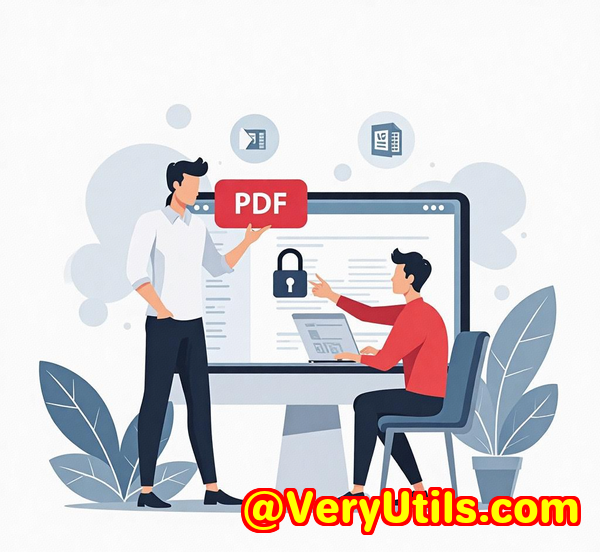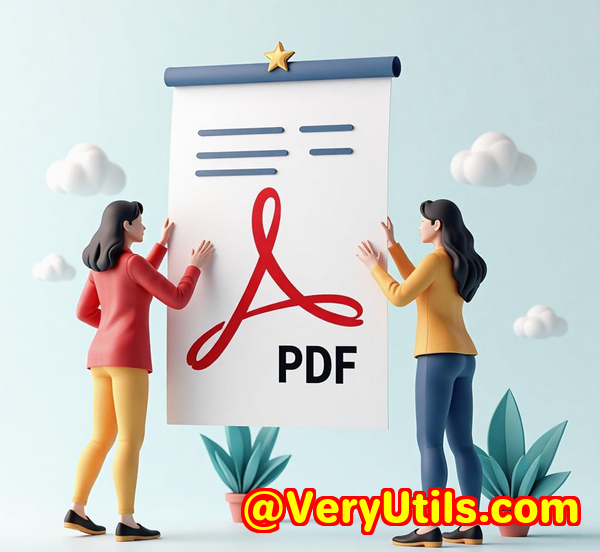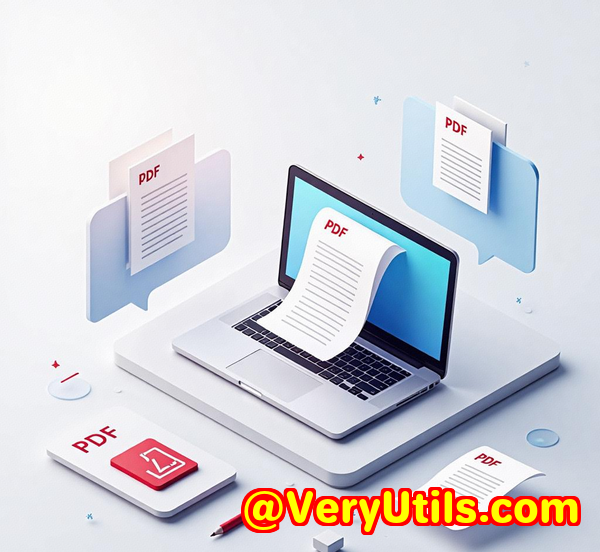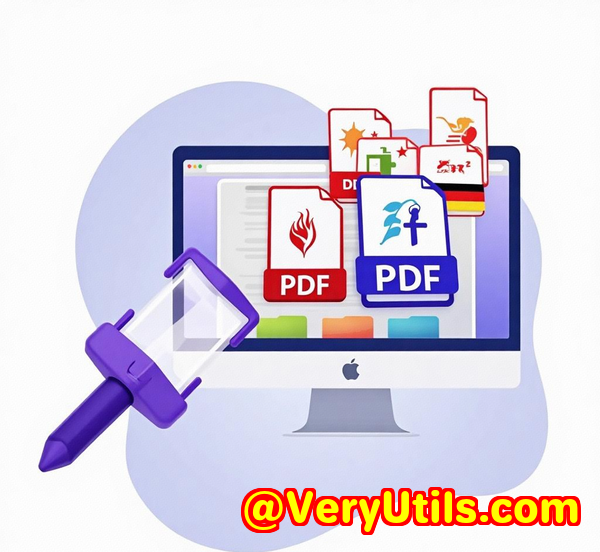Automate overlay of variable data printing tasks on PDFs using VeryPDF PDF Overlay SDK
Automate Overlay of Variable Data Printing Tasks on PDFs Using VeryPDF PDF Overlay SDK
You know the drillprinting hundreds or thousands of PDFs, trying to get every document to look exactly the same. From company letterheads to dynamic watermarks, from form templates to background images, it's a tedious process. But what if you could streamline it? What if there was a way to overlay all that data automaticallyon your own terms and on your own time? That's exactly what the VeryPDF PDF Overlay SDK helps you do.

The Challenge of Dynamic PDF Overlay
If you're working with PDFs, you've probably faced the challenge of overlaying data. Whether it's to add a watermark, apply a template, or place a header on a report, these tasks can take up valuable timeespecially when you need to process large batches of documents. Doing it manually? That's a nightmare. It's a problem that many businesses, especially in industries like publishing, finance, and legal, face daily.
That's where VeryPDF PDF Overlay SDK comes in. Instead of relying on complicated workflows or external services, you can control the overlay process from within your own environment. It's fast, flexible, and it doesn't require an internet connection to work.
How the VeryPDF PDF Overlay SDK Works
The VeryPDF PDF Overlay SDK is a standalone software development kit that lets you integrate PDF overlay functionality into your existing system. It's designed to work with both Windows and Linux platforms, making it a versatile option for a wide range of developers.
What does it do? Essentially, it allows you to overlay one PDF on top of another, maintaining the structure and layout of both files. This is especially helpful when you need to merge PDF content in a way that preserves visual integritywithout losing quality.
Key Features That Make a Difference
When I first started using the VeryPDF PDF Overlay SDK, what struck me most was how quickly it handled batch processing. I could overlay a company header, apply a watermark, and stamp confidential markings on hundreds of PDFs in just a few clicks.
Here are some of the most powerful features that make this tool a game-changer:
-
Standalone Solution: No need to rely on external APIs or cloud services. The SDK works offline, giving you full control over the process.
-
High-Quality Output: The SDK ensures that both vector content and image resolution are preserved, so you don't sacrifice quality in the final output.
-
Flexible Integration: Whether you're using a command-line interface, web applications, or backend systems, integrating the SDK is a breeze.
-
Cross-Platform Compatibility: It runs on both Windows and Linux, and can even be containerized for Docker or cloud virtual machines.
-
Customizable Logic: The SDK allows for advanced workflows like variable data printing and dynamic stamping, ideal for large-scale enterprise applications.
-
Batch Processing Support: Automate the overlay process across thousands of PDFs, saving both time and effort.
Personal Experience: Streamlining Workflows
I'll admit, before I started using this tool, I dreaded the thought of manually overlaying PDFs. Whether it was invoices, reports, or legal documents, the process felt endless. Every new document would require me to manually position logos, text, and watermarksand the occasional human error would always creep in.
With VeryPDF PDF Overlay SDK, everything changed. I could quickly set up a batch job to overlay multiple files at once. I remember one instance where I had to apply the company's official letterhead to a batch of 500 reports. With just a few lines of code, the entire task was done in under an hour. If I had done it manually, it would have taken me days.
The batch processing support was a lifesaver. Plus, the ability to automate this on a schedule meant I didn't even have to be there to oversee the process. I was able to keep other tasks moving while the PDF overlays happened in the background.
Use Cases for the VeryPDF PDF Overlay SDK
Here are a few ways businesses can use this SDK to solve their document processing challenges:
1. Enterprise Document Portals
For large businesses, having a consistent look across all outgoing PDFs is a must. With this SDK, you can automatically overlay your company's official header and footer onto every invoice, report, or document generated in your system. This process can be fully automated, reducing manual intervention and potential errors.
2. Publishing and Print Centers
Imagine a customer sends you a PDF for printing, but you need to apply a high-resolution background or specific template to make it print-ready. The VeryPDF PDF Overlay SDK can help you apply these changes automatically, ensuring that every document fits the desired format, regardless of the original file's structure.
3. Educational Institutions
Whether it's exam papers, eBooks, or certificates, educational institutions often need to add dynamic watermarks like "Confidential" or "Sample Only." With the SDK, you can stamp these watermarks across entire batches of PDFs with a single command. It's perfect for situations where security and branding are paramount.
4. Legal and Financial Services
Legal and financial documents often require disclaimers, compliance templates, or archival stamps. The VeryPDF PDF Overlay SDK allows you to dynamically add these elements to PDFs, saving time and reducing the chance of human error.
The Core Advantages of the VeryPDF PDF Overlay SDK
I could write a whole book on why I love this tool, but here are the top reasons it stands out:
-
Speed: Whether you're working with 10 PDFs or 10,000, the SDK processes documents quickly and efficiently.
-
Flexibility: Need different overlays for different departments? Want to overlay dynamic content like variable data? You can do all that and more.
-
Automation: Batch processing lets you apply overlays to thousands of PDFs at once, saving you hours of work.
-
High-Quality Output: Your PDFs retain their crisp text, vector content, and image resolution, making it suitable for print-ready output.
-
Cost-Effective: No recurring subscription fees. Once you buy the SDK, you own it forever.
My Final Recommendation
If you're tired of the manual effort that goes into overlaying data on your PDFs, this tool is exactly what you need. I've used it for everything from adding corporate letterheads to stamping confidential documents, and it's saved me countless hours of work.
I'd highly recommend VeryPDF PDF Overlay SDK to anyone who needs a fast, reliable way to automate overlay tasks. It's an indispensable tool for businesses that handle large volumes of PDFs.
Try it yourself and see how it can streamline your document workflows. Start your free trial now at VeryPDF.
Custom Development Services by VeryPDF
If you need a more tailored solution, VeryPDF offers custom development services for a wide range of PDF processing needs. Whether you're working with Linux, macOS, or Windows, VeryPDF can help you build a solution that fits your unique requirements.
From Python and PHP to JavaScript and .NET, VeryPDF provides expert development services to help you integrate PDF overlay functionality into your systems. You can also benefit from services like custom watermarking, barcode generation, OCR, and more.
If you need a specialized tool, or if you need to scale your operations, contact VeryPDF through their support center at VeryPDF Support.
FAQs
1. What platforms is the VeryPDF PDF Overlay SDK compatible with?
The SDK works on both Windows and Linux, and it can even be containerized for Docker or cloud-based virtual machines.
2. Can I automate the PDF overlay process?
Yes, the SDK supports batch processing, so you can automate the overlay of PDFs, saving both time and effort.
3. How do I integrate the SDK into my application?
The SDK provides both command-line and API interfaces, making it easy to integrate with web applications, desktop tools, or backend systems.
4. Can I overlay dynamic content like variable data?
Yes, the SDK supports overlays for dynamic data, allowing you to apply custom overlays based on the content of each document.
5. How do I get started with the SDK?
You can download the SDK directly from the VeryPDF website, where you will also find documentation, sample scripts, and developer guides.
Tags or Keywords
-
PDF overlay SDK
-
Batch PDF processing
-
Dynamic PDF watermarking
-
Enterprise document automation
-
VeryPDF SDK integration



